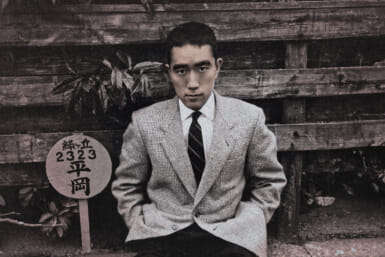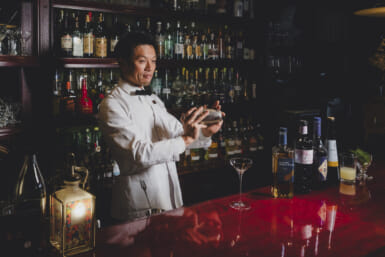by Tanya Korinfsky
Loos, johns, benjos, tearais, lamp posts, etc.
I had often found myself smirking at the illustrations for how to use a Western-style toilet plastered on countless thrones across the nation, until a Japanese friend confided that her foreign visitor had used a Japanese-style station toilet Western style. The mind boggles.
But even if you’ve been clever enough to figure out that you don’t sit on Japanese-style toilets, there’s a lot more to this delicate business than that.
Public loos are easy. Always carry your own toilet paper and something for drying your hands with. Don’t scream for help if a member of the opposite sex walks in. This happens mainly in the toilets of Japanese-style restaurants which are not segregated. Try to be discreet and keep your eyes averted, otherwise you may be the one accused of being perverted.
If you’re wearing trousers, it’s advisable to roll them up to your knees. Don’t forget to roll them down again, though, as I once did, making it obvious to all and sundry what I’d just been doing.
In some restaurants you’ll be offered another oshibori after you return from the loo. Just wipe your hands, not your face, as you did (if you’re a man) with the first one.
Recently, in the letters-to-the-editor column of a Japanese newspaper, a middle-aged housewife lamented that the younger generation were completely lacking in manners. Her complaint: young ladies frequently fail to flush the toilet during use. I often wondered how these people could be so quick. Anyway, it’s still considered proper to perform this ritual, even if it feels uncomfortably close.
There’s another kind of public toilet that is guaranteed to get people all steamed up: This is the lamp post type. Variations are walls, shrubs and alleyways. It’s hard for a lot of foreigners to get used to these, especially if you come from a country where relieving yourself in public is considered an offense and you’re likely to get arrested for indecent exposure. Again, averted eyes and a blank face may be the best way of dealing with this lest you get arrested for invasion of privacy or molesting.
Now, if you are in a private residence and using the toilet, flush it during use. Don’t walk away in the toilet slippers, although most foreigners automatically do this in the beginning. Especially blood-chilling for the Japanese is the guest who not only clomps all over the tatami in slippers, but does so in the benjo slippers. Make sure you put the slippers back the way you found them, i.e. ready for the next person to pop their toes straight in. Even if you haven’t used them, you’ll find yourself having to neatly arrange the slippers anyway, for, invariably, you get all tangled up in them as you enter. I’ve always had more trouble with the slippers than with the actual toilet. Once I dropped a slipper into the bowl. I won’t mention whose place it was, just that it was a traumatic experience trying to fish it out.
Now that you know everything about how to dispose of this part of the business, let me get on to some general observations. The toilet occupies a special spot in the Japanese heart. One famous writer said it was his favorite place. Traditionally austere and dimly lit, it was the perfect environment for enlightenment and inspiration, he insisted. Other Japanese have pointed out that it is the only place where you can get away from fellow man and be completely alone, legitimately, without people thinking you are odd.
Some Japanese use it as a place to study English. This was made possible by a Yokohama toilet paper manufacturer who began printing English vocabulary on his toilet rolls. This will no doubt eliminate wastage of time. It will also amount to not a small victory for the Women’s Liberation Movement, for women will leap ahead in their knowledge of English because of their greater consumption. But, the question here is: do the ends justify the means? And can we allow this kind of business to pass for study?
Anyway, it’s clear that we are going to have to wipe our present image of the toilet from our minds. Rather than seeing it as a time-waster or as a place merely to pass time, the humble toilet should be elevated to its proper status — as a haven where people can unburden their minds, find relief from the rigors of daily existence and gain enlightenment.








